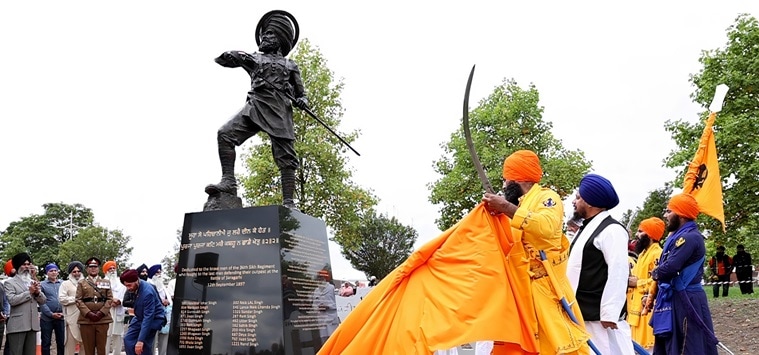September 12 marks the 127th anniversary of the Battle of Saragarhi, widely recognized as one of the most valiant last stands in military history. This pivotal event took place in 1897 and showcased extraordinary bravery and sacrifice.
The Battle
On September 12, 1897, 21 soldiers from the 36th Sikh Regiment (now 4 Sikh) faced over 8,000 Afridi and Orakzai tribal militants. Led by Havildar Ishar Singh, the soldiers held their position for seven hours, despite being heavily outnumbered. Their defense resulted in 200 militants killed and 600 injured.
Historical Accounts
- Capt Amarinder Singh’s Perspective In his book, “The 36th Sikhs in the Tirah Campaign 1897-98 – Saragarhi and the Defence of the Samana Forts,” former Punjab Chief Minister and military historian Capt Amarinder Singh describes the soldiers’ awareness of their impending death but highlights their unwavering bravery. The soldiers chose not to surrender, demonstrating unparalleled courage.
- Strategic Importance of Saragarhi Saragarhi was a crucial communication tower between Fort Lockhart and Fort Gulistan, both in the rugged North West Frontier Province (NWFP), now Pakistan. Although it was typically manned by 40 soldiers, only 21 soldiers from the 36th Sikh Regiment and a non-combatant, Daad, were present during the battle.
- The Tribal Assault Early in the day, the sentry at Saragarhi reported a large tribal army approaching the fort. The estimated number of attackers ranged between 8,000 and 15,000. Sepoy Gurmukh Singh, 23, sent a distress message to commanding officer Lt Col Haughton, who responded that reinforcement was impossible. Havildar Ishar Singh, fully aware of the dire situation, resolved to hold the fort.
- Challenges Faced The soldiers faced significant challenges, including limited ammunition—around 400 rounds per man—and the disruption of communication lines. Sepoy Gurmukh Singh operated the heliograph communication system alone, which was typically managed by a team of three.
The Legacy of Havildar Ishar Singh
- Background Havildar Ishar Singh, born in a village near Jagraon, joined the Punjab Frontier Force in his late teens and was later drafted into the 36th Sikhs. Known for his independent spirit and strong leadership, he was beloved by his men.
- Personal Anecdotes Capt Amarinder Singh and Maj Gen James Lunt describe Ishar Singh as a maverick whose rebellious nature often conflicted with military superiors. Despite this, he was highly respected for his courage and unconventional methods.
Aftermath and Honors
- Gallantry Awards In a break from tradition, Queen Victoria posthumously awarded the 21 fallen soldiers the Indian Order of Merit, equivalent to the Victoria Cross, along with land and monetary compensation. The non-combatant, Daad, was not included in these honors despite his bravery.
- Commemoration In 2017, the Punjab government declared September 12 as Saragarhi Day. The Khyber Scouts regiment of the Pakistani army continues to honor the Saragarhi memorial. The British constructed an obelisk using burnt bricks from Saragarhi and commissioned gurdwaras in Amritsar and Ferozepur in tribute to the martyrs. The Shiromani Gurudwara Parbandhak Committee has also named a hall after Saragarhi. Additionally, Akshay Kumar’s film Kesari was loosely based on the battle.
Multiple-Choice Questions (MCQs):
- When is the anniversary of the Battle of Saragarhi observed?
- A) September 10
- B) September 12
- C) September 15
- D) September 20
- How many soldiers from the 36th Sikh Regiment were involved in the Battle of Saragarhi?
- A) 21
- B) 30
- C) 40
- D) 50
- What was the primary role of Saragarhi during the battle?
- A) Supply depot
- B) Communication tower
- C) Command post
- D) Medical center
- What was the estimated number of tribal militants that attacked Saragarhi?
- A) 5,000 to 8,000
- B) 8,000 to 15,000
- C) 10,000 to 20,000
- D) 15,000 to 25,000
- Who was the commanding officer of the 36th Sikh Regiment during the battle?
- A) Lt Col John Haughton
- B) Capt Amarinder Singh
- C) Maj Gen James Lunt
- D) Havildar Ishar Singh
